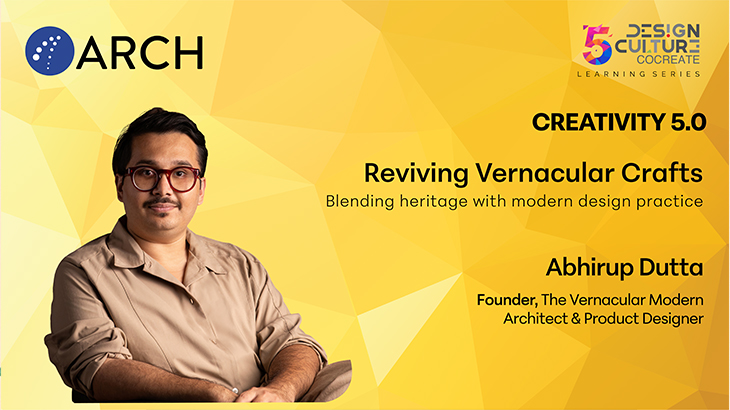In a world where design trends shift rapidly and technology evolves daily, what does it mean to stay rooted in tradition while creating for the present? This question formed the heart of a recent design session. The session was led by Abhirup Dutta, a Bangalore-based architect, product designer, and founder of The Vernacular Modern. The conversation explored how traditional Indian crafts and indigenous materials, when studied deeply and reinterpreted with sensitivity, can inform contemporary design practice in meaningful and innovative ways.
This blog explores critical insights for design students on how to build culturally connected and future-ready work.
1. Start with Craft, Not Just Concept
Craft should not be treated as mere decoration or a final layer of visual appeal. It is a living knowledge system—rooted in material, method, and memory that deserves to shape the design process from the beginning. By observing these crafts in their original contexts—especially those at risk due to generational shifts- designers can uncover methods and ideas often overlooked. This approach not only honors artisan communities but also helps preserve and reinterpret these practices for today’s world.
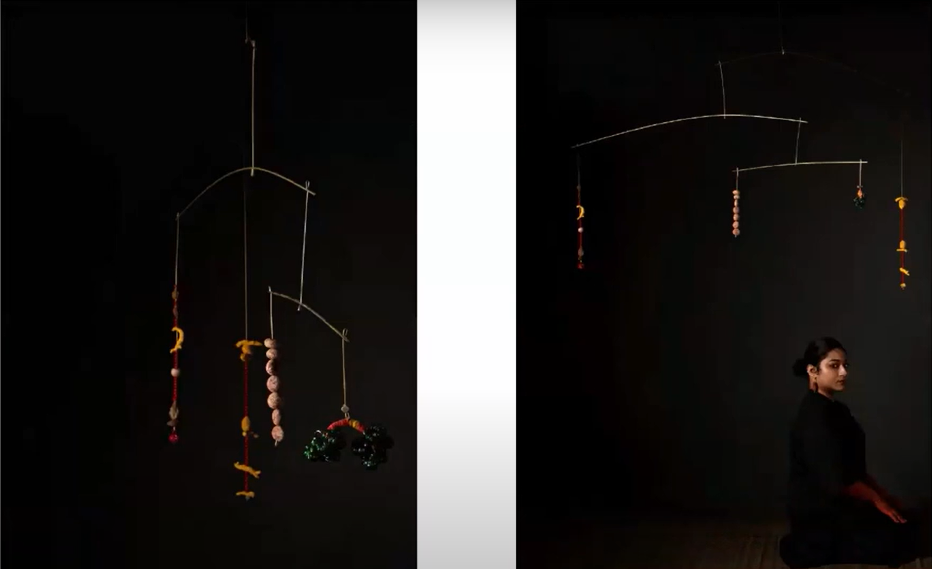
The speaker emphasized that rather than beginning with mood boards or quick sketches, designers should start by engaging deeply with traditional crafts: documenting processes, understanding materials, and listening to the stories of the makers.
2. Let Materials Lead the Way
A key principle for meaningful design is letting materials lead the process. In many traditional communities, materials are deeply tied to daily life, rituals, and the environment. For example, in arid regions of India, large grain storage jars called kotis are made entirely from local soil. These jars are not just practical storage vessels; they are carefully built, maintained year after year, and even treated like architectural elements of the home.
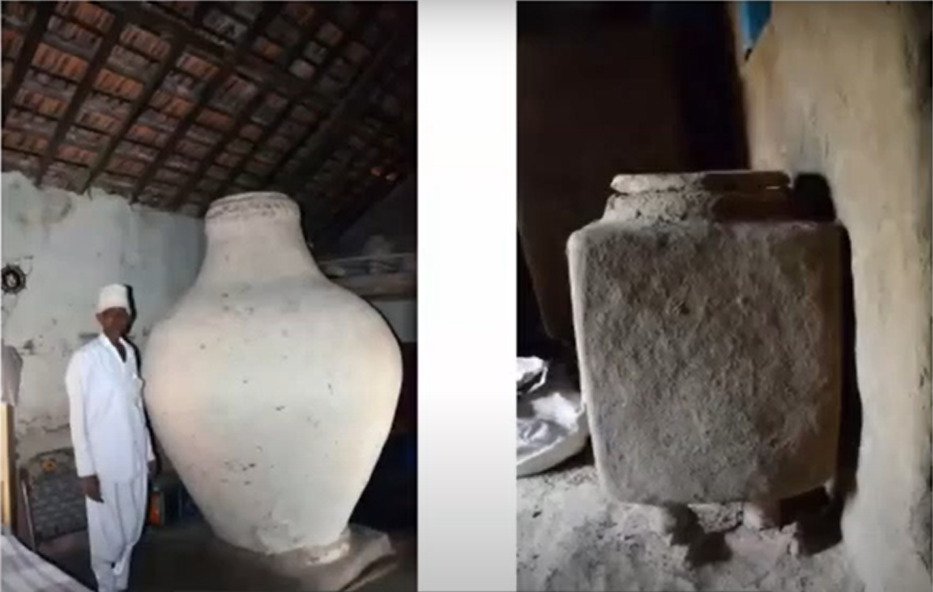
Abhirup explained how these learnings were translated into sculptural furniture made from similar local soil, showing how a traditional material could find new expression in a modern context. He insisted that design students take time to engage with materials, understanding how they behave, where they come from, and the stories they hold—before rushing into form or function.
3. Explore Rituals as a Design Lens
Rituals give designers a meaningful lens to explore culture, memory, and symbolism. Everyday objects from Indian ceremonies, such as temple weights, puja vessels, go beyond utility or ornament. Their forms are shaped through repeated use, purpose, and generations of tradition.

The speaker encouraged designers to view these rituals not as relics of the past but as design systems in themselves. By studying how these objects are used and what they represent, designers can reinterpret their core ideas into contemporary forms. For example, balance-based furniture inspired by temple gold weights or sculptural pieces influenced by haldi ceremonies shows how ritual can guide both storytelling and structure. This approach turns design into a bridge—connecting time-honoured traditions with the needs and expressions of the present.
4. Blur the Lines Between Function and Expression
Design isn’t just about how something works; it’s also about what it says. A functional object can carry emotion, memory, and narrative, all while serving a practical purpose. One powerful example is a cabinet inlaid with taro leaf motifs, crafted using Mysore’s traditional wood inlay techniques. While fully functional, the piece also tells a story about fragile ecosystems and disappearing landscapes. Here, craftsmanship becomes a form of ecological storytelling. The cabinet is not just storage, it’s a conversation.
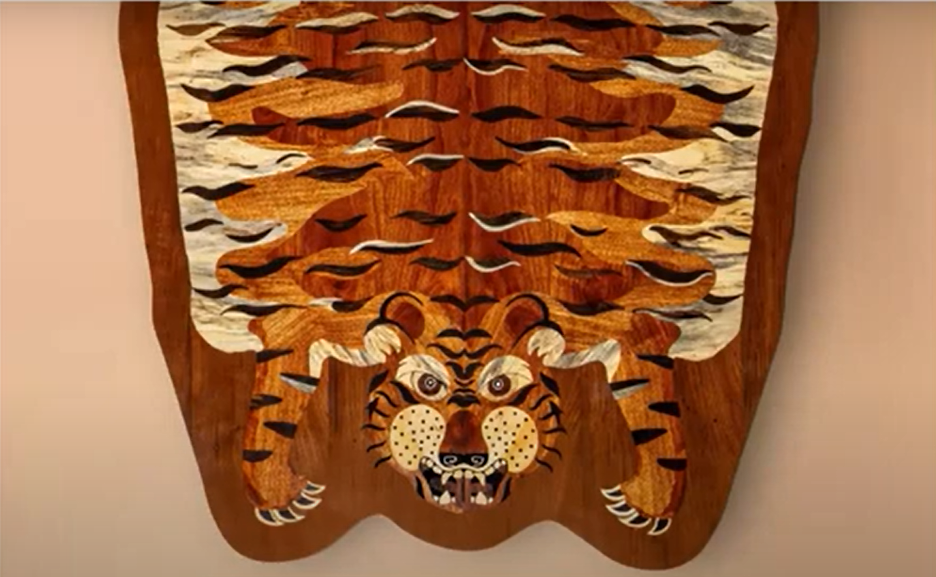
Abhirup pointed out that this kind of work breaks down the traditional divide between art and design. When intention drives the process through material choices, cultural context, and meaning, even functional objects can become deeply expressive.
5. Stay Human-Centred in an AI-Driven World
As digital tools and AI reshape the future of design, it’s easy to get swept up in the speed, efficiency, and automation they offer. But in this evolving landscape, the most meaningful work still comes from a place of human connection.
Craft-based design offers something that no algorithm can replicate—empathy, intuition, and an understanding of time-honoured processes. Working with traditional materials and artisan communities isn’t just about aesthetics or nostalgia. It’s about learning patience, honouring process, and recognizing the deeply embedded cultural knowledge within each object. AI can be a great support in the design process, but it cannot replace the concepts and approach of a designer. ARCH has discussed this topic in a previous blog – Will AI Replace Graphic Designers?
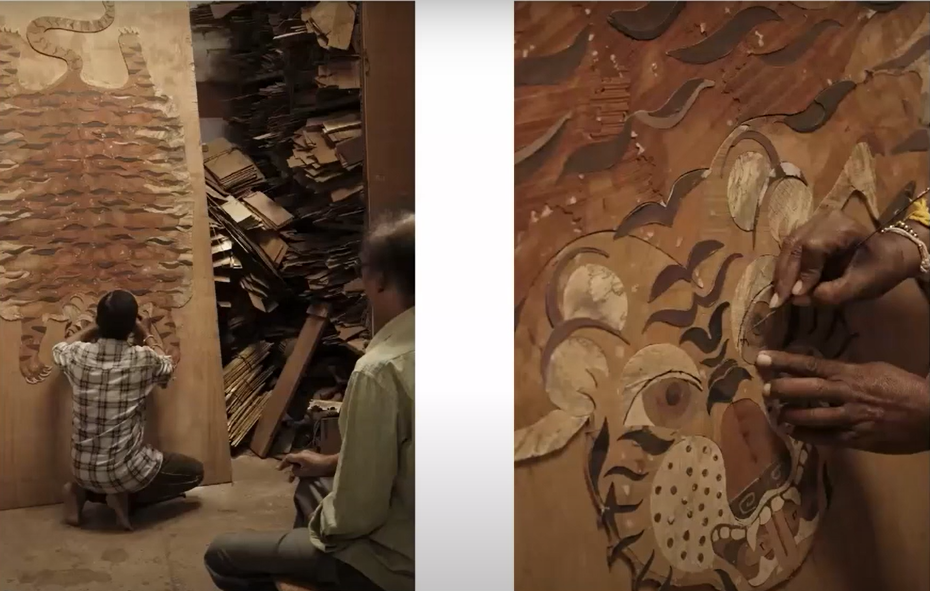
For students, grounding your practice in these human-centred values builds a foundation that can evolve with technology. AI can generate ideas, but it can’t understand lived experience or cultural nuance. Abhirup explained that by collaborating with craftspeople, engaging with rituals, and asking deeper questions about context and meaning, young designers can create work that is both innovative and rooted.
At ARCH, we believe that meaningful design begins with a deep understanding of culture, material, and community. Our learning approach encourages students to explore traditional crafts, rituals, and indigenous knowledge systems not as nostalgic references, but as living, evolving practices that can inform contemporary design. Through these design learning sessions, we aim to equip future designers with the sensitivity, curiosity, and contextual thinking needed to create work that is both relevant and responsible in today’s world.
Join us at ARCH, where heritage meets innovation to shape the next generation of thoughtful designers, and don’t miss out on our other blogs from the Design Culture Learning Series, where we explore real stories, insights, and practices that matter to design students and educators alike.
